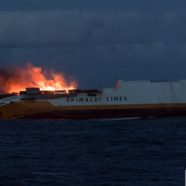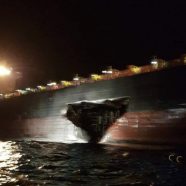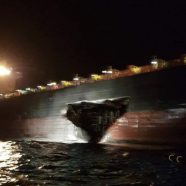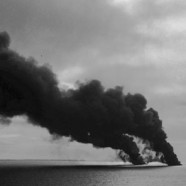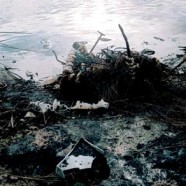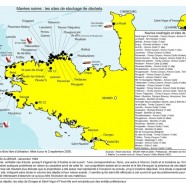Torrey Canyon – March 18, 1967: The Mother of the Black Tides
On February 19, 1967, the Torrey Canyon left the oil refinery of Al Ahmadi in Kuwait. The supertanker was heading for Milford Haven, Wales, United Kingdom after circumventing South Africa. She was transporting 120,000 tons of crude oil. Built in 1959 in the United States by Newport News Shipbuilding, she was jumboized in 1965, and lengthened from 247 to 297 meters; her initial capacity of 60,000 tons was doubled. She was the pride of oil shipping companies.
On March 18, 1967, the Torrey Canyon, due to a faulty navigation, was impaled on the reefs between the Isles of Scilly and Cornwall.
Two months later, the aftermath of the shipwreck was taking a heavy toll – 150 kilometers of polluted shores in Southeast United Kingdom. Thousands of birds covered in oil came across the English Channel and were washed up dead or dying up from Calais to the Ile d’Yeu, France. The coastline was in mourning from the peninsula of La Hague to the tip of Brittany. The Channel Islands were wearing black.
For the first time, the expression “Black Tide” was on the front page of the news.
After 44 years of occupation, the Torrey Canyon liberates l’île d’Er
The BP tanker Torrey Canyon ran aground March 18, 1967 on reefs offshore Cornwall in Great Britain. It transported 120,000 of crude oil. Several Breton fishing ships were eyewitnesses to the crash course of the Torrey Canyon. The majority of the oil slick headed toward the French coast and has left its tracks between Cherbourg and l’île d’Yeu. Northern Brittany was very severely affected. The oil spill has been attacked with detergents. The Defense Ministry organized the battle, the waste being treated as an enemy.
Round Robin # 4 Petrol traps on the Isle of Er
Round Robin n°4
Over the last 40 years, the Isle of Er facing Plougrescant in the Côtes d’Armor, has become a disaster area from the wastes of the oil spill of the Torrey Canyon, and with time passing other accidents, such as the Amoco Cadiz and the Tanio, have added to the problem.
The wastes are left in the open. Er is a private island, which coastline is accessible to everybody by boat, or at equinox ebb tide, by foot. No warning signs indicate to the users of the coastline the potential physical danger which the waste pits represent.






